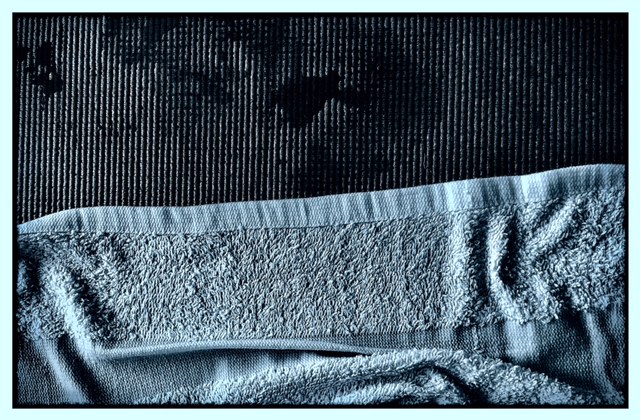
Dear Canada Post,
I am a stamp collector. No, I don’t keep albums of stamps sorted by date, or tuck away mint issues in crisp little envelopes by tweezers or gloved hands, and I certainly don’t keep up with all the literature. I’m not what you’d label a philatelist.
I’m more of a casual collector: I simply tear used stamps off an envelope and glue them (lightly) into my journal. The stamps, like the notations, are a record of where I am or what is happening in this country.
I’ve always enjoyed the art and the imagery of the postage stamp. I get excited about new issues, but only, really, when I’m in need of stamps. Yes, I am amongst the dwindling number of people who still send letters and, when selecting stamps, I make sure I use the latest offerings.
There have been some great stamps issued over the years. The recent Canadian Opera series pays tribute to the art form in such a fitting dramatic fashion. I’m still raving about the Jean-Paul Riopelle series from 2003 (possibly the largest postage stamps ever issued), and I was fond of the icons of Canadian music immortalized on a postage stamp (a personal favourite was Rush). Who can deny the universal (or intergalactic) appeal of the 50th Anniversary Star Trek Series, complete with Dr. Spock!
I also like old stamps and will occasionally pop into Toronto’s first Post Office (still serviceable, but also a museum, at 260 Adelaide St E.) to pick up some of the vintage stamps it sells.
It’s nice to use nice stamps, often for letters or cards to my daughter who also collects in pretty much the same manner. It’s something we do, and have done since she was a kid away at ballet camp. Decades later we still write letters back and forth. It is something we share even though we are separated by all those miles. I’m certain you can say Canada Post keeps us closer.
However I was upset recently when, in January, a letter arrived with the beautiful Year of the Rooster issue. Don’t get me wrong, the deep red stamp with stylized rooster is beautiful, but someone had taken a ballpoint pen and scratched three lines across the image. It was much like a vandal marring a bus shelter or bridge with useless and senseless markings (I hesitate in calling it graffiti because I have witnessed some wonderful street art).
It has been explained to me that this is the way “someone” in the postal system will cancel a stamp which has made it thorough the journey from there to here undetected, escaping the expensive sorting automation or Canada Post employees along the way. I’m told that “someone” noticed this letter had not been stamped with an destination or postmark — cancelled out, as they say — so they have taken a pen and deliberately marked it up so it cannot be used again.
I’m writing to ask if this is so?
If a letter is to make it through the postal system and the stamp does not receive a postmark, is it company practice to take a pen and scratch a few lines across said stamp? Is this official policy?
Canada Post, being a long-time government corporation (arm’s length or otherwise), is a unionized shop. I’m most sure that every step of a letter’s travel is covered under some sort of procedure or policy that ensures both privacy and security in the duties it is charged with. I’d like to know how it is written that a stamp, having avoided the postmark machine or post master’s stamp, should be marked up correctly to show it has officially been delivered through the mail service.
I’ve attached a photo of the stamp in question; is this the correct corporate code, or cancellation mark prescribed when manually rendering a stamp unusable? It appears to be two diagonal stripes and sort of a squiggly hook leading off the envelope’s right edge. Is this the correct manual cancellation mark that should appear on a stamp that has travelled though the system?
It seems a bit too, I don’t know, random to me. In fact, it looks careless. Actually I would think an employee manually cancelling stamps would have been provided with one of the many rubber stamps you often see at post offices or contracted service outlets.
Or am I wrong?
Does the Canada Post act allow for this sort of vandalism to exist within its process? Is this right and proper? Would this suffice on a tax return, or contest entry, or rebate offer that must be postmarked by a certain date?
As you can see from the supplied photograph, I was fortunate to receive another Year of the Rooster stamps a few days following receipt of the disfigured one. It has been stamped plainly and deliberately with a postmark, and it is the one I shall include in my casual collection. I consider myself fortunate to receive the second stamp, for in the day of declining letters, I wasn’t sure if I would ever receive a stamp of this particular issue.
A stamp has a purpose, and a value, even after it has gone through the system. There are people like me, and plenty far more serious, who enjoy the practice of philately as a pastime. Your corporation already knows this and spends a lot of money trying to attract people into collecting. You even have a seasonal magazine, Details, advancing upcoming issues (and trying to sell us something else).
And yes, a stamp is only a dollar (85 cents+ applicable taxes), but it is a collectable and a piece of our evolving history. In my case, it has been defaced, essentially rendered useless in this form. Again I ask if the use of a ball point pen to scratch diagonal lines and a bent squiggly is the official practice of your corporation, and if it is, I would ask you to continue.
Not only are there seasoned collectors out there, but somewhere there is also a kid who, once like me, became fascinated by the handwritten letter and the stamp which brought communication to the door. Can you imagine the disappointment when a letter arrives with a stamp that has been treated less than fairly? I should hope you’ll do you best to keep that sort of magic alive and start ensuring stamps are cancelled properly.
You will notice I’m not sending this through the postal service. I will admit being a person who uses, or relies, on email a great deal. I do embrace electronic communication, and will also post this on my website and on your FaceBook page (and mine). It is direct and effective, as we all seem to know.
I also know this could also have been done by regular mail but, in this case, I’m not just sending a letter, I’m sending a message.












